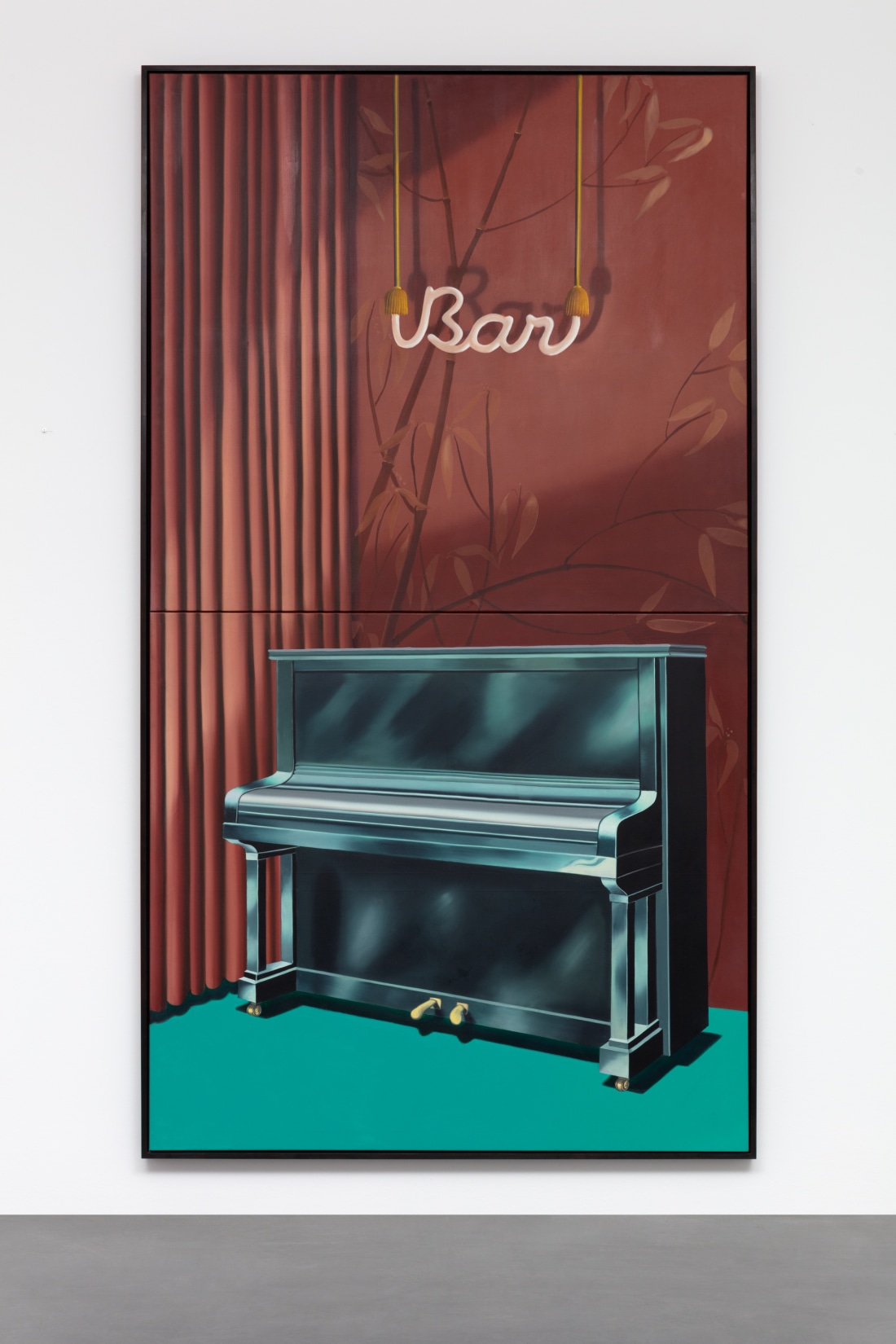The oeuvre of the painter Almut Heise presents viewers with somewhat of a challenge. Her realistic paintings and works on paper, created through great dedication and attention to detail over five decades, constitute an ode to representational painting—albeit an ode in which intricately rendered details resist a cohesion with narrative. At once anachronistic and timeless, her works deftly elude classification and continually generate new questions and lines of enquiry.
Stylistically, Bar suggests a departure for Heise—it does not depict the furniture so typical of post-war German decor, with its cocktail chairs, small kidney tables, parade cushions, and bag lamps, all of which were characteristic of the many paintings of interiors she produced during the mid-1960s. At its center is a black, 1920s piano, depicted in front of red bamboo wallpaper bearing the neon inscription “Bar.” The painting was completed within her DAAD scholarship from 1970 to 1971 at the Royal College of Art in London, during which time she studied with Peter Blake and became fascinated by the Art Deco style so omnipresent at the time.
